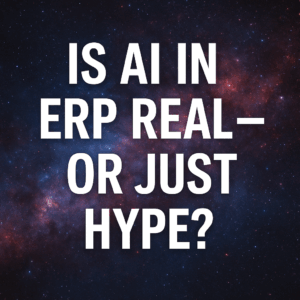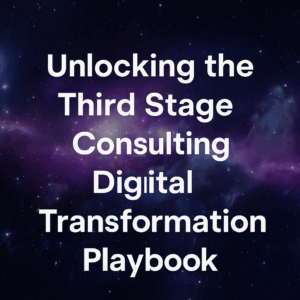In today’s fast-paced business environment, the intersection of technology and customer service is increasingly pivotal. At the heart of this intersection lies Enterprise Resource Planning (ERP) systems, sophisticated software solutions designed to integrate and manage core business processes.
An ERP system is akin to the central nervous system of a company, harmoniously coordinating various departments — from Finance and Human Resources to Supply Chain and Customer Relationship Management. By consolidating disparate business processes into a single, coherent system, ERP ensures that information flows seamlessly across the organization, fostering informed decision-making and operational efficiency.
The significance of customer service in the contemporary business landscape cannot be overstated. In an era where consumer expectations are higher than ever, and brand loyalty is fiercely contested, delivering exceptional customer service is not just a nicety, but a necessity. It’s a key differentiator that can elevate a brand above its competitors. However, achieving excellence in customer service is no small feat. It requires a deep understanding of customer needs, quick and effective response to inquiries, and the consistent delivery of high-quality experiences.
This is where ERP systems come into play, acting as a linchpin in enhancing customer service. By integrating a system, businesses can unlock a myriad of benefits that directly impact customer satisfaction. From providing real-time access to customer data and inventory levels to streamlining operations and facilitating personalized customer interactions, ERP systems are transformative tools.
In essence, the adoption of a system is not just an upgrade of technology — it’s a strategic investment in improving customer service. The purpose of this blog is to delve into how a system can revolutionize customer service, making it more efficient, responsive, and personalized, ultimately driving business growth and customer loyalty.
To learn more about ERP software, check out our Digital Stratosphere Podcast episode titled – What Is ERP Software? Lessons from an Independent ERP Consultant.

Table of Contents
ToggleUnderstanding Customer Service Challenges in Today’s Business Environment
In the contemporary business environment, customer service faces a myriad of challenges that can impede a company’s ability to meet and exceed customer expectations. One of the primary challenges is response time. In an age where instant gratification is the norm, customers expect rapid responses to their inquiries and issues. Any delay, no matter how minor, can lead to dissatisfaction and a negative perception of the brand. Businesses grappling with inefficient processes or disjointed communication channels often find themselves unable to respond swiftly, thus jeopardizing customer relationships.
Another significant hurdle is the provision of personalized service. Today’s customers seek experiences that are tailored to their unique needs and preferences. They desire recognition and understanding from businesses, expecting them to remember past interactions and preferences. However, achieving this level of personalization requires a deep and accessible understanding of each customer’s history and preferences, a task that can be daunting without the right tools and data.
Accurate information dissemination is also a critical aspect of customer service. Customers rely on businesses to provide correct and up-to-date information about products, services, and policies. Any misinformation can lead to confusion, frustration, and a loss of trust. This challenge is compounded by the multiple platforms and channels through which customer interactions take place, such as social media, email, and phone. Ensuring consistency and accuracy across all these channels is vital but challenging.
These customer service challenges are not just operational concerns; they are strategic ones. They have a direct impact on a company’s reputation, customer satisfaction, and ultimately, its bottom line. Businesses that fail to address these challenges risk losing customers to competitors who are more adept at meeting these evolving service expectations. As such, finding effective solutions to these challenges is a priority for any business aiming to thrive in the modern market.
The Role of ERP Systems in Addressing Customer Service Challenges
ERP (Enterprise Resource Planning) systems play a crucial role in addressing the multifaceted challenges of customer service in the modern business environment. At its core, an ERP system is a comprehensive software platform that integrates various business processes and functions into a single, unified system.
This integration covers a wide range of components, each crucial to different aspects of a business’s operations. For instance, the Customer Relationship Management (CRM) module within an ERP system focuses on managing interactions with current and potential customers. It tracks customer communication, purchases, and preferences, enabling businesses to build stronger relationships through personalized engagement.
Another key component is supply chain management, which oversees the flow of goods and services from the supplier to the customer. This aspect of ERP ensures that inventory levels are optimal, order fulfillment is efficient, and customer demands are met promptly. Similarly, inventory management within ERP systems provides real-time data on stock levels, enabling businesses to prevent stockouts or overstock situations, both of which can significantly impact customer satisfaction.

The true power of an ERP system in enhancing customer service lies in its ability to provide a unified view of customer information. By consolidating data from various departments — Sales, Customer Service, Finance, and Logistics — into a single database, ERP systems ensure that every team has access to the same, up-to-date information. This unified view is critical for delivering consistent and accurate customer service. Sales representatives can access complete customer histories, customer service teams can track order and delivery statuses, and management can make informed decisions based on comprehensive customer insights.
This integration leads to improved coordination across different departments, ensuring that customer inquiries and issues are addressed promptly and efficiently. For example, when a customer contacts support with a query about an order, the representative can instantly access the order’s status, including any delays or issues in the supply chain, and communicate this information accurately to the customer. This level of transparency and responsiveness directly addresses common customer service challenges like response time and accuracy of information.
In essence, ERP systems act as a central hub for all customer-related data and processes, enabling businesses to offer a more cohesive, responsive, and personalized service experience. This not only helps in resolving customer service issues more effectively but also contributes to building long-term customer relationships and loyalty.
Improving Response Time with ERP
Improving response time is a critical aspect of enhancing customer service, and ERP (Enterprise Resource Planning) systems are instrumental in achieving this. By streamlining operations and facilitating quicker access to data, ERP systems enable businesses to respond to customer queries and issues with unprecedented speed and efficiency.
One of the primary ways ERP systems improve response time is by integrating various business processes and data into a single, unified platform. This integration means that information from different departments – be it Sales, Customer Service, Inventory, or Shipping – is readily available in one central location.
For instance, when a customer contacts support with a query about the status of their order, the customer service representative can immediately access the latest updates from the logistics department within the same system. This eliminates the need for time-consuming communication between departments and manual data retrieval, thus significantly speeding up response times.
Moreover, many modern ERP systems are equipped with automation features. These can automatically update inventory levels, process orders, and even provide customers with real-time notifications about their order status. This automation not only speeds up internal processes but also provides customers with instant information, reducing the need for them to reach out to customer service for updates.
Case studies across various industries demonstrate the impact of ERP systems on response times. For example, a retail company implemented an ERP system that integrated their online and offline sales channels. This integration allowed them to provide real-time inventory information to customers on their website. As a result, the number of customer inquiries related to product availability decreased by 30%, and the company reported a 25% improvement in customer satisfaction scores due to quicker response times.
Another example is a manufacturing company that used an ERP system to streamline its order processing. The system’s ability to provide real-time data on production schedules and inventory levels enabled the company to give customers accurate and immediate information about the status of their orders. This led to a 40% reduction in customer complaints related to delays and a significant improvement in their overall response time to customer inquiries.

These examples illustrate how ERP systems can transform the efficiency of customer service operations. By providing quick access to integrated data and automating routine tasks, ERP systems not only improve response times but also enhance the overall quality of customer interactions. This responsiveness is key to satisfying modern customers’ expectations and maintaining a competitive edge in today’s fast-paced business environment.
Personalizing Customer Interactions through ERP Insights
Personalizing customer interactions is a cornerstone of modern customer service, and ERP (Enterprise Resource Planning) systems are pivotal in facilitating this. By harnessing the wealth of data within ERP systems, businesses can gain deep insights into customer preferences and history, allowing them to tailor their interactions in a way that resonates with each individual customer.
ERP systems aggregate and analyze data from various touchpoints in the customer’s journey. This data can include past purchase history, service interactions, feedback, and preferences. By analyzing this comprehensive data set, businesses can identify patterns and preferences specific to each customer.
For example, an ERP system could reveal that a particular customer frequently purchases a certain type of product or responds positively to specific marketing campaigns. Armed with this knowledge, businesses can customize their communication and recommendations to align with the customer’s preferences, resulting in a more personalized and engaging experience.
Furthermore, ERP systems can enhance customer engagement through segmentation. By categorizing customers based on their behavior, purchase history, or other criteria, businesses can create targeted marketing campaigns and communication strategies. This segmentation ensures that customers receive relevant information and offers, which is far more effective than a one-size-fits-all approach.
Strategies for personalizing customer interactions can include customizing email marketing content based on past purchases, offering personalized discounts or promotions, and providing tailored product recommendations. For instance, if an ERP system identifies a group of customers who frequently purchase eco-friendly products, a business can target them with specific content and offers related to their interests.
Additionally, ERP systems can improve the effectiveness of customer service teams by providing them with detailed customer profiles. When a customer contacts support, the representative can access a complete overview of the customer’s history with the company, including past communications, preferences, and issues. This information enables the representative to provide a more personalized and informed service, which not only resolves the customer’s issue more effectively but also enhances the overall customer experience.
Ensuring Accuracy and Consistency in Customer Communications
Ensuring accuracy and consistency in customer communications is essential for maintaining trust and credibility with clients. ERP (Enterprise Resource Planning) systems play a critical role in achieving this by centralizing and synchronizing information, ensuring that customers receive accurate and up-to-date data across all communication channels.
One of the primary ways ERP systems ensure accuracy in customer communications is by serving as a single source of truth for all organizational data. Whether it’s product information, pricing, policies, or customer-specific details, the information is stored and managed within the ERP system.
This centralized data management means that when updates are made – be it a change in product specification or pricing adjustment – they are immediately reflected across the entire system. As a result, when a customer service representative accesses this information during an interaction, they are guaranteed to provide the most current and accurate information to the customer.
Furthermore, ERP systems play a crucial role in maintaining consistency across various communication channels. In today’s digital age, customers interact with businesses through multiple channels, including email, social media, phone calls, and live chat. An ERP system integrates these channels, ensuring that the information conveyed is consistent regardless of the medium.
For example, if a customer inquires about a product’s availability via email and later follows up through a phone call, both responses will be based on the same, real-time information from the ERP system. This consistency is vital for avoiding confusion and ensuring that customers have a cohesive experience with the brand, regardless of how they choose to communicate.
Additionally, ERP systems can automate certain aspects of customer communication, such as order confirmation emails or shipment notifications. This automation not only saves time but also reduces the risk of human error, further ensuring the accuracy of the information being communicated.
In the context of global businesses, ERP systems can also handle variations in information based on geographic location, such as differing currency, language, or legal requirements. This capability is crucial for international businesses to maintain accuracy and consistency in their communications with customers from different regions.
In summary, ERP systems are instrumental in ensuring that accurate and up-to-date information is consistently shared with customers across all communication channels. By centralizing data management, integrating communication platforms, and automating information dissemination, ERP systems help businesses build and maintain trust with their customers through reliable and consistent communication. This reliability is key to fostering long-term customer relationships and enhancing overall customer satisfaction.
Overcoming Implementation Challenges
Implementing an ERP (Enterprise Resource Planning) system can be a transformative step for a business, but it is not without its challenges. Common hurdles include the significant cost of the system, the need for comprehensive training, and often, resistance to change within the organization.
The cost of implementing an ERP system can be substantial, encompassing not only the price of the software itself but also the expenses related to hardware, training, and ongoing maintenance. For many businesses, especially small to medium-sized enterprises, this financial outlay can be a significant barrier. Careful budgeting and a clear understanding of the ROI (Return on Investment) that the ERP system is expected to deliver can help in justifying the expense. It’s also worth exploring different pricing models and vendors to find a solution that fits the company’s budget and needs.
Training is another critical aspect of ERP implementation. These systems are complex and multifaceted, requiring users to learn new software and processes. Adequate training is essential to ensure that employees are comfortable and proficient with the system. This training should be tailored to different user groups within the organization, focusing on the specific functionalities relevant to each department. Ongoing support and refresher training can also help ease the transition.
Resistance to change is a common human response, and introducing a new ERP system represents a significant shift in how a company operates. Managing this change effectively is crucial for a successful implementation. This involves clear communication about the benefits of the ERP system, addressing concerns, and involving employees in the process from the outset. It’s important to create a positive narrative around the change, emphasizing how the ERP system will improve not just business operations but also the day-to-day work of the employees.
To ensure a successful ERP implementation focused on customer service improvement, it’s important to:
- Start with a clear strategy: Define what you want to achieve with the ERP system, particularly in terms of improving customer service. This strategy will guide the implementation process.
- Choose the right ERP solution: Select a system that aligns with your business needs and has strong capabilities in customer relationship management.
- Engage stakeholders early: Involve key stakeholders from across the business in the planning and implementation process. This includes representatives from Customer Service, Sales, Marketing, IT, and other relevant departments.
- Focus on data quality: Ensure that the data being migrated into the ERP system is clean, accurate, and structured in a way that supports improved customer service.
- Test thoroughly: Before going live, thoroughly test the ERP system with real-world scenarios to ensure it meets the needs of customer service.
- Plan for ongoing evaluation and adjustment: After implementation, continuously assess the system’s performance and make adjustments as needed to optimize customer service.
By addressing these challenges and focusing on these key areas, businesses can successfully implement an ERP system that enhances customer service and drives overall business growth.
Conclusion
In conclusion, integrating an ERP (Enterprise Resource Planning) system presents a transformative opportunity for businesses aiming to elevate their customer service. By streamlining operations, offering personalized interactions, ensuring accurate and consistent communication, and overcoming implementation challenges, ERP systems equip businesses with the tools needed to meet and exceed modern customer expectations.
The successful adoption of an ERP system not only enhances customer satisfaction and loyalty but also positions businesses for sustained growth and competitiveness in an ever-evolving market. Ultimately, the strategic implementation of an ERP system is an investment in a company’s most valuable asset – its customers.
I would enjoy brainstorming ideas with you if you are looking to strategize for an upcoming transformation or are looking at selecting an ERP system. Please feel free to contact me at eric.kimberling@thirdstage-consulting.com. I am happy to be a sounding board as you continue your digital transformation journey.





